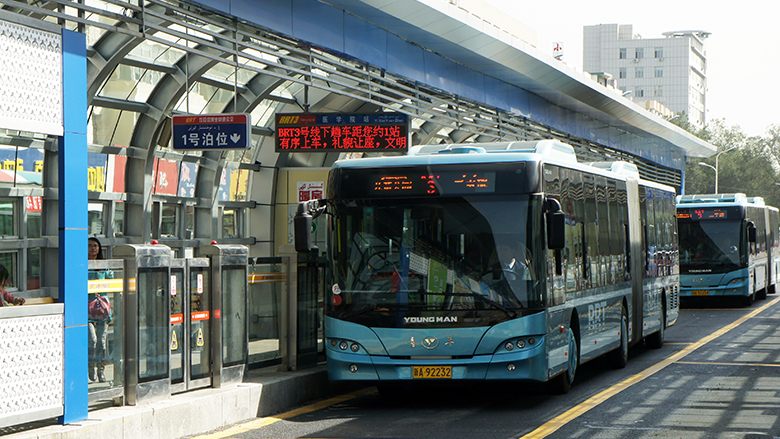More than 150 participants came together for a workshop in Urumqi in April to discuss urban intelligent transport systems (ITS) and jobs-housing balance. Participants came from transport research institutes and project management offices of World Bank-financed projects across China.
The workshop was jointly organized by the World Bank, China Transport News, and project management office of the Global Environment Facility (GEF)-supported Large-City Congestion and Carbon Reduction Project. ITS are systems that apply information and communication technology (ICT), such as traffic signal control systems, speed cameras, and parking guidance, to make safer and ‘smarter’ use of transport networks. Jobs-housing balance refers to the distribution of employment opportunities and workforce across a geographic area.
Improving urban mobility is an emerging priority for transport planners and public policymakers. Uneven distribution of homes and workplaces and long commutes lead to growing dependence on cars, traffic congestion, loss of productivity, and deteriorating air quality. ITS systems have been developed to better manage personal travel and traffic and improve mobility. The workshop served as a platform for sharing good practices, challenges, and opportunities.
“We can only manage what we can measure. With the information captured by ITS technology, we can make better and more integrated decisions. China's ITS and traffic management capabilities have improved substantially. World Bank-funded projects have adopted some of the state-of-the-art ITS technology,” said Georges Bianco Darido, Lead Transport Specialist at the World Bank.
He highlighted the trends and lessons from ITS implementation, including a systems engineering approach with special emphasis on needs assessments involving stakeholders such as traffic police, transport bureau, transport operators, and residents.
Wang Xiaojing, Chief Scientist of the National Center for ITS Engineering & Technology, introduced the concept of Mobility-as-a-Service (MaaS), which integrates various forms of transport services into a single mobility service accessible on demand. He also discussed new trends in ITS development in China, including autonomous vehicles, ITS for multimodal transport, low-emission smart cars, and information-sharing platforms. Wang emphasized the important role ITS will play in the development of a sustainable and organic transport network for cities during the 13th Five-Year Plan period (2016-2020).
In addition, speakers from the University of Hong Kong, Beijing Jiaotong University, and Beijing Traffic Development and Research Institute discussed rail-based transit oriented development (RTOD) as a potential solution to the jobs-housing imbalance as the creation of walkable communities centered around the rail system reduces the need for cars.
Key lessons learned from the workshop include:
- Privacy is one of the major concerns when using ITS. To safeguard the public’s privacy and safety, laws and regulations should be developed to govern the use of personal information in the context of transport data.
- An effective ITS framework requires top-level design, data integration and good coordination among relevant government authorities.
- More should be done to promote gender equality in ITS. The equal interests and needs of both men and women should be taken into account in the gender action plan and gender equality assessment of ITS operation.
- The jobs-housing balance can be achieved at the planning level through mixed land use, integrated planning of housing supply and employment centers, providing affordable housing near low-paying jobs, and improving major transport corridors.
The workshop was part of the World Bank’s TransFORM activities on Urban Transport. TransFORM is a knowledge platform jointly developed by the World Bank and Ministry of Transport to share China’s experience and know-how gained from 30 years of developing a large national transport network.

